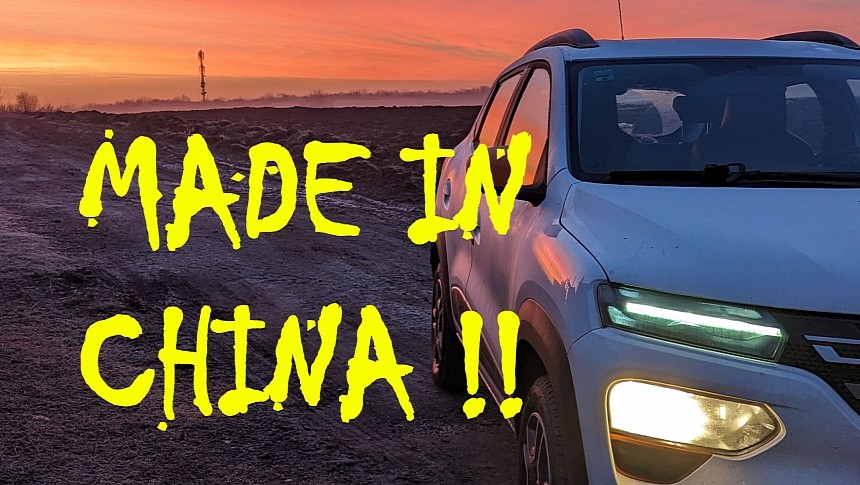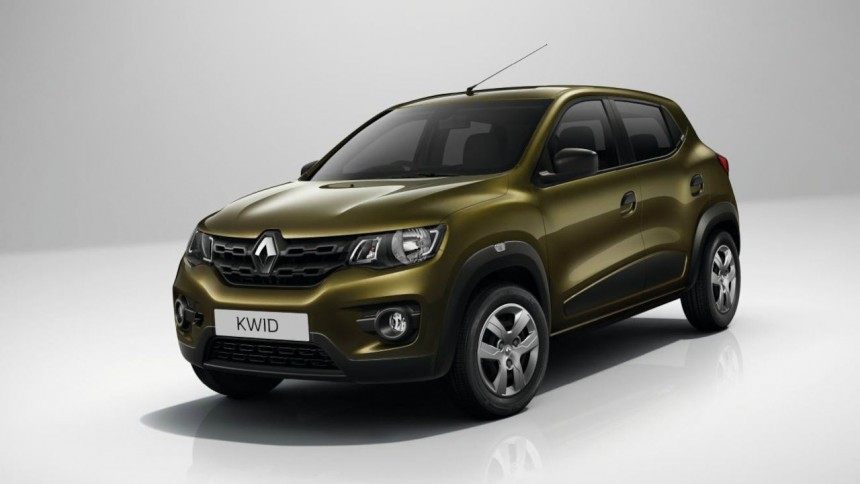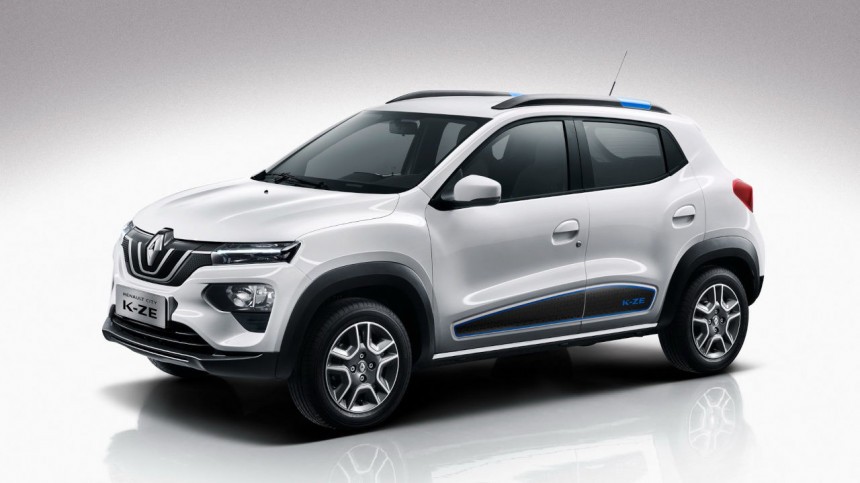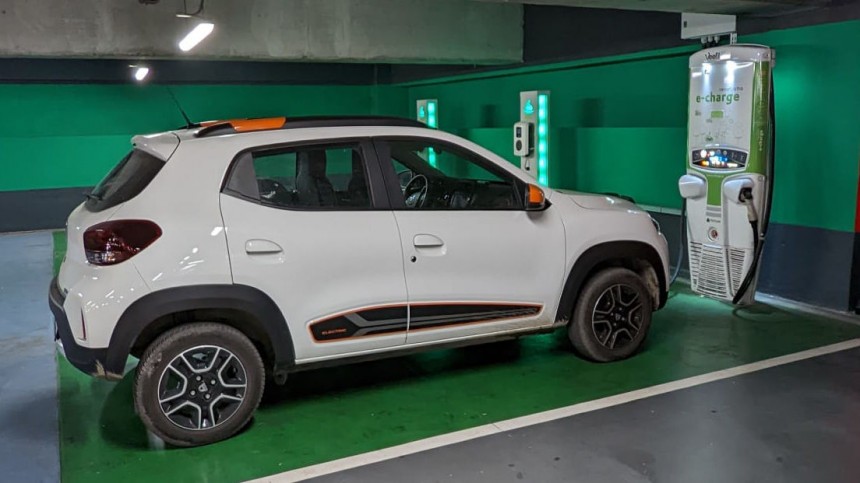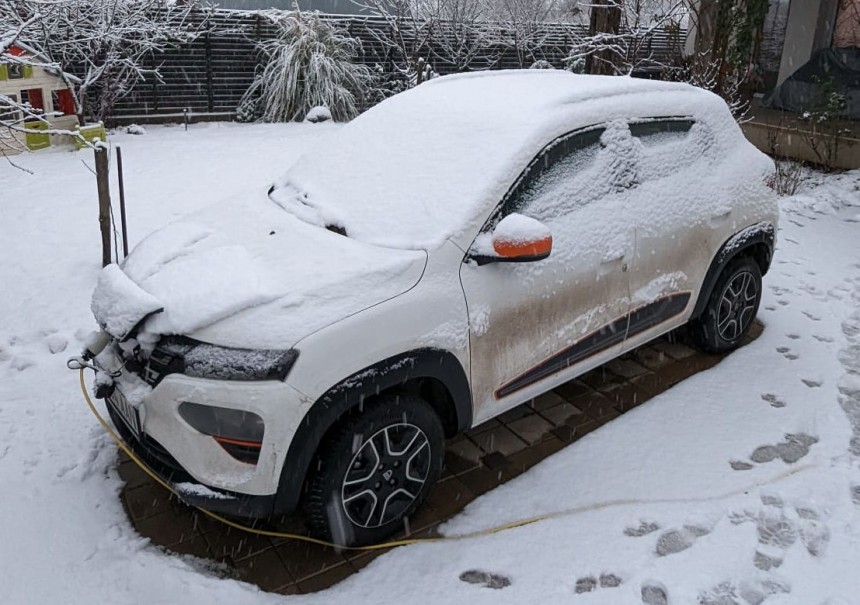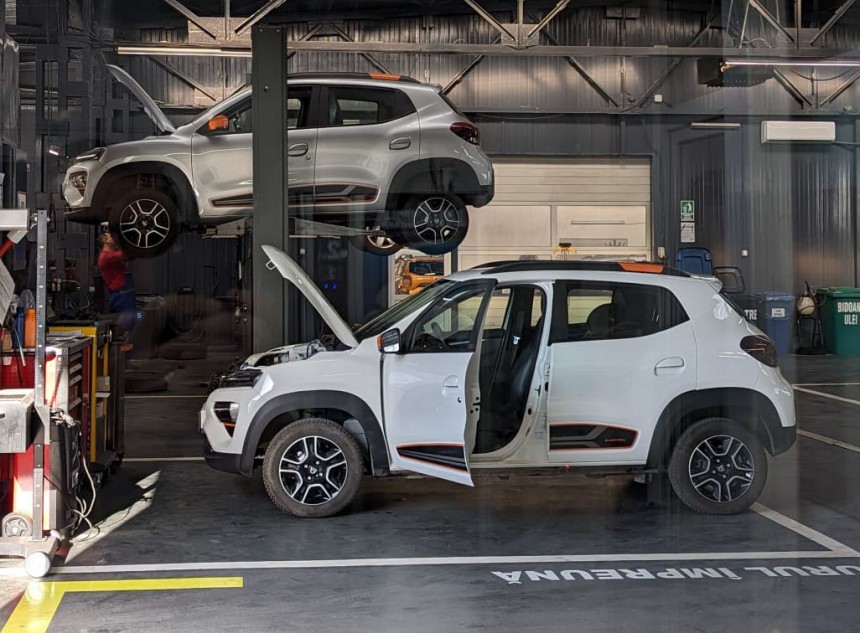Two years ago, I became one of the owners of the first edition of Dacia Spring. Even now, I'm not sure it was a good decision, but the less-than-9,000-euro sticker (after the government's EV subsidy deduction) made it a must-have offer. Here's what I learned in almost two years of using a very cheap Chinese electric car.
On a Saturday (or Sunday?) in the spring of 2021, Dacia opened the reservation list for the new Spring, "the most affordable new electric car in Europe." Thanks to my Eastern European country's generous EV subsidy program, its starting price was around 8,000 euros.
In 2021, this value translated to around 6,800 GPB / 9,500 USD / 11,800 CAD / 12,600 AUD. What new car could you buy for this money, my friends in the UK, US, Canada or Australia? It was almost the cheapest new car in the EU, counting the ICE cars.
Yes, I was worried it was Made in China, but the meager price made the risk worth it. In the first hour, there were thousands like me paying the reservation fee for this car. That's why someone joked, saying, "Spring is the Tesla of the poor." I didn't care, as long it was the best car-for-the-bucks I've ever bought.
I only needed a cheap, small, inexpensive, sufficiently spacious, and safe four-wheeled vehicle for my daily commute. I also wanted it to be suitable enough to transport my little daughter to kindergarten, go shopping, or go to the park with my kid and wife.
The new Spring checked all these boxes. In November 2022, the dealer called me, and I officially became one of the thousands, and tens of thousands, drivers of probably the cheapest EV imported from China in the EU. Was it a good or a bad thing?
A year later, the little SUV-ish Renault Kwid was introduced to the Indian public as a sub-4-meter-long little brother for Sandero Stepway or Duster. A small 0.8-liter petrol engine powered it, and it couldn't earn not even one star at Euro NCAP safety tests.
Nevertheless, its boot had "best-in-class load capacity," and its base price of 3 lakhs (around €4,200 or $4,600) made it a relatively affordable car in the Indian market. In Europe, Dacia Sandero and Logan were the kings of cheap new cars and some very low-profile Chinese models.
Renault didn't plan to sell Kwid in Europe because the costs to make it eligible for safety and emissions standards in the EU were too high. Instead, Kwid landed in South America, initially in Brazil, where Renault cars sell well.
When I asked my sources in Renault about the Kwid, they laughed: the materials and the assembly quality were depicted as awful, while lack of performance and poor stability simply made it a bad car. As for the safety, the Global NCAP results were terrible.
In the meantime, China was heavily investing in renewables and electrification. The Western world didn't quite take China's ambitious objectives seriously, and carmakers continued to see China as a profitable market. That's why Renault decided to convert the Kwid into an electric car specifically for the Chinese market.
In 2018, the K-ZE Concept was introduced at the 2018 Paris Motorshow, which raised some eyebrows among European carmakers. A year later, a production version was launched in China, built by a joint venture between Renault-Nissan-Mitsubishi Alliance and the Chinese producer Dongfeng.
Unfortunately, the French EV didn't sell too well in China. The competition was fierce because many new car brands flooded the home market with cheaper alternatives. The funny thing is that Renault K-ZE was challenged by a Dongfeng model – essentially a slightly redesigned Kwid. It is the usual business for non-Chinese carmakers involved in joint ventures with Chinese companies.
2020 was the year when Dacia Spring became official, as a flashy concept that made it clear it's just a K-ZE rebadged for Europe with the logo of the low-cost brand owned by Renault. It promised a 200 km / 125 miles range for under 20,000 euros / 23,000 USD, so it made quite a buzz among electroheads.
Unfortunately, while the Prius II was credited as one of the most reliable cars in the industry, the used car "Russian Roulette" struck me. I had no problems with the battery, the electric motor, or the components of the hybrid system.
Instead, I paid much money for many mechanical issues because of high mileage, age, and the unknown history of previous owners. That's why my wife and I agreed that the family car we needed should be a new, modern, and safe car.
We chose a Golf-sized compact car with an excellent price and a little three-cylinder turbo gasoline engine. Between you and I, the "ICE downsizing" trend is just a marketing b*llshit, but I had to make this compromise because of budget limitations.
For instance, a similar hybrid family car was two times more expensive, while the most affordable electric VW ID.3 was three times more expensive. At that moment, competitive Chinese EVs weren't available in my country.
After selling my Prius II and buying the new family compact car, I was stuck with my wife's former car: a petrol 15-year-old Ford Fusion based on the second-generation Fiesta. Every three or four months, I had to pay a visit to service for little but annoying technical problems due to age and mileage (it had more than 170,000 km / 105,000 miles on the clock).
So, when production Spring was announced, I had the chance for a test drive in actual conditions. I used it as my daily commute for three days, and frankly, I was impressed. Despite being "made in China," it simply suited my needs. The only enigma at that point was the price: "Will it cost no more than 10,000 euros?"
Thanks to EV subsidies, the car I ordered, which had the optional DC charger, was less than 9,000 euros / 9,500 USD. Because I sold the Fusion for around 2,000 euros, in the end, the Spring cost me less than 7,000 euros / 7,500 USD.
The real question is this: would I have bought another Chinese EV for this money? Probably not. Trust is crucial, and I simply don't trust cheap Chinese cars. In fact, Europeans don't trust them, so only a few of them sold in some European markets, but never in volumes.
I was indeed aware that this electric Dacia was a rebadged Chinese Dongfeng. But I also knew it was better because of safety improvements and the Dacia service network. Good luck with any other Chinese EV in case of technical problems.
It's not something to think of when you see a very attractive price, but when sh*t happens, the service factor is the only one that matters. Ask any Tesla owner what he fears the most. And then check how many Tesla owners who had accidents or technical problems returned to Tesla.
Today, my little car is almost two years old and has 20,000 km / 12,000 miles on the odometer. Usually, I drive around 30 km daily, and one-third of my home-office route is on extra-urban roads, where I speed up to 100 kph / 62 mph. I rarely need to drive 100 km in a day, so there is no stress for me.
I didn't use the ECO mode much as I don't focus on maximizing the range (why should I?), so the average consumption is around 14-15 kWh/100 km. That's a little more than the official 11.9 kWh/100 km, and I'm okay with that. In the cold days of winter, when I use the air conditioning, consumption values occasionally reach 20-22 kWh/100 km, but I'm okay with that also.
Imagine that I pay four times less for electricity per 100 km than I used to pay for gasoline per 100 km in the case of the Fusion. Running the Spring costs me up to five times less than the other family ICE car my wife drives. This little electric car is two to three times less costly to run compared to the hybrid Prius I owned. The service revisions are also several times cheaper than for ICE cars.
I only charge at home at night, using a reinforced 220V outlet. I used DC stations a few times, just out of curiosity. Of course, many other Spring owners are "addicted" to charging networks because they can't charge at home, but this has nothing to do with the car being Chinese or not.
My most important conclusion is that the Spring just works up to this point. I don't care anymore about the quality of materials, which is indeed poor, but not execrable. It drives reasonably, the suspension comfort is reasonable, acceleration is more than fair, and braking is okay.
Frankly, it's an adequate car for how much I paid two years ago and for my use habits. But today, the facelifted Spring is more costly. The entry-level (Essential trim) can be bought in my country for more than 10,000 euros / 10,600 USD and lacks some features, like the DC charger or the multimedia system with a reversing camera.
Based on my good experience with my car, I recommend the refreshed Spring to very down-to-earth people who don't expect a Rolls-Royce for this money. I have second thoughts regarding the Extreme trim with a more powerful electric motor.
I'd have to pay for this one more than 12,000 euros / 12,800 USD, which is a reasonable amount for the car. But, at the same time, it's one-third more than I paid for my car. I'm not willing to spend this extra for a futile, more powerful electric motor. But, hey, this is only my opinion.
Chinese EVs imported into the EU are indeed cheaper than their European correspondents. But they are not cheap. For instance, the compact BYD Dolphin starts from 30,000 euros / 32,000 USD in Europe. In my country, thanks to subsidies, it could start from under 20,000 euros / 21,000 USD, which sounds tempting in theory.
But, hey, the VW ID.3 is already at the same price level. It's around 1,000 euros more expensive, but it's much more of a car than the Chinese rival. I would unquestioningly pay 5% more for a much better car from a much-trusted brand at this price level.
The same goes for the MG electric cars. MG is a British brand acquired by Chinese SAIC, and the most affordable model is the compact crossover MG ZS. I could also buy it for less than 20,000 euros in my country, but would I? No, I wouldn't.
Some people would, but I wonder if so many can afford that risk. When you pass certain limits of car value, people will likely have that extra 5-10% to choose a better European alternative. After all, buying an electric car is not exactly like buying a smartphone.
I think the invasion of cheap Chinese smartphones cannot be replicated in electric car sales. It simply is too different. And the trust factor is much more important for car buyers. Chinese EVs lag in that regard, despite sometimes very good car press reviews – the more money for publicity, the better the review, is it?
In the end, while my experience with a really cheap Chinese electric car is positive, I can't recommend so-called cheap Chinese EVs with prices starting from 25-30,000 euros (before incentives). With a higher price come higher expectations. I doubt the price factor can overtake the trust and brand reputation.
In 2021, this value translated to around 6,800 GPB / 9,500 USD / 11,800 CAD / 12,600 AUD. What new car could you buy for this money, my friends in the UK, US, Canada or Australia? It was almost the cheapest new car in the EU, counting the ICE cars.
Yes, I was worried it was Made in China, but the meager price made the risk worth it. In the first hour, there were thousands like me paying the reservation fee for this car. That's why someone joked, saying, "Spring is the Tesla of the poor." I didn't care, as long it was the best car-for-the-bucks I've ever bought.
I only needed a cheap, small, inexpensive, sufficiently spacious, and safe four-wheeled vehicle for my daily commute. I also wanted it to be suitable enough to transport my little daughter to kindergarten, go shopping, or go to the park with my kid and wife.
The new Spring checked all these boxes. In November 2022, the dealer called me, and I officially became one of the thousands, and tens of thousands, drivers of probably the cheapest EV imported from China in the EU. Was it a good or a bad thing?
For the context: a brief history of Spring
Back in 2014 (almost ten years ago, how time flies!), Renault unveiled the KWID concept in India. At that time, ZOE and Leaf were the pioneers, while Tesla was starting to rock the world. Europeans didn't care about an Indian concept, previewing a little car for emerging markets.A year later, the little SUV-ish Renault Kwid was introduced to the Indian public as a sub-4-meter-long little brother for Sandero Stepway or Duster. A small 0.8-liter petrol engine powered it, and it couldn't earn not even one star at Euro NCAP safety tests.
Renault didn't plan to sell Kwid in Europe because the costs to make it eligible for safety and emissions standards in the EU were too high. Instead, Kwid landed in South America, initially in Brazil, where Renault cars sell well.
When I asked my sources in Renault about the Kwid, they laughed: the materials and the assembly quality were depicted as awful, while lack of performance and poor stability simply made it a bad car. As for the safety, the Global NCAP results were terrible.
In the meantime, China was heavily investing in renewables and electrification. The Western world didn't quite take China's ambitious objectives seriously, and carmakers continued to see China as a profitable market. That's why Renault decided to convert the Kwid into an electric car specifically for the Chinese market.
In 2018, the K-ZE Concept was introduced at the 2018 Paris Motorshow, which raised some eyebrows among European carmakers. A year later, a production version was launched in China, built by a joint venture between Renault-Nissan-Mitsubishi Alliance and the Chinese producer Dongfeng.
Unfortunately, the French EV didn't sell too well in China. The competition was fierce because many new car brands flooded the home market with cheaper alternatives. The funny thing is that Renault K-ZE was challenged by a Dongfeng model – essentially a slightly redesigned Kwid. It is the usual business for non-Chinese carmakers involved in joint ventures with Chinese companies.
Why I needed a car like the Spring
At the time of the Spring concept unveiling, I was looking for a little commuter at around 10,000 euros / 11,000 USD after a not-so-pleasant experience with a (very) used Toyota Prius II. I bought this "too good to be true offer" a few years before as a family car in preparation for the child we wanted to have.Unfortunately, while the Prius II was credited as one of the most reliable cars in the industry, the used car "Russian Roulette" struck me. I had no problems with the battery, the electric motor, or the components of the hybrid system.
Instead, I paid much money for many mechanical issues because of high mileage, age, and the unknown history of previous owners. That's why my wife and I agreed that the family car we needed should be a new, modern, and safe car.
We chose a Golf-sized compact car with an excellent price and a little three-cylinder turbo gasoline engine. Between you and I, the "ICE downsizing" trend is just a marketing b*llshit, but I had to make this compromise because of budget limitations.
For instance, a similar hybrid family car was two times more expensive, while the most affordable electric VW ID.3 was three times more expensive. At that moment, competitive Chinese EVs weren't available in my country.
After selling my Prius II and buying the new family compact car, I was stuck with my wife's former car: a petrol 15-year-old Ford Fusion based on the second-generation Fiesta. Every three or four months, I had to pay a visit to service for little but annoying technical problems due to age and mileage (it had more than 170,000 km / 105,000 miles on the clock).
So, when production Spring was announced, I had the chance for a test drive in actual conditions. I used it as my daily commute for three days, and frankly, I was impressed. Despite being "made in China," it simply suited my needs. The only enigma at that point was the price: "Will it cost no more than 10,000 euros?"
Shut up and take my money!
When reservations opened in 2021, no one was sure how much the Spring would cost in 2022 – I had to wait one year for the car to be delivered. Well, it was a little like buying a Tesla. I expected a price of a little over 10,000 euros, but I was wrong.Thanks to EV subsidies, the car I ordered, which had the optional DC charger, was less than 9,000 euros / 9,500 USD. Because I sold the Fusion for around 2,000 euros, in the end, the Spring cost me less than 7,000 euros / 7,500 USD.
The real question is this: would I have bought another Chinese EV for this money? Probably not. Trust is crucial, and I simply don't trust cheap Chinese cars. In fact, Europeans don't trust them, so only a few of them sold in some European markets, but never in volumes.
It's not something to think of when you see a very attractive price, but when sh*t happens, the service factor is the only one that matters. Ask any Tesla owner what he fears the most. And then check how many Tesla owners who had accidents or technical problems returned to Tesla.
Today, my little car is almost two years old and has 20,000 km / 12,000 miles on the odometer. Usually, I drive around 30 km daily, and one-third of my home-office route is on extra-urban roads, where I speed up to 100 kph / 62 mph. I rarely need to drive 100 km in a day, so there is no stress for me.
I didn't use the ECO mode much as I don't focus on maximizing the range (why should I?), so the average consumption is around 14-15 kWh/100 km. That's a little more than the official 11.9 kWh/100 km, and I'm okay with that. In the cold days of winter, when I use the air conditioning, consumption values occasionally reach 20-22 kWh/100 km, but I'm okay with that also.
Imagine that I pay four times less for electricity per 100 km than I used to pay for gasoline per 100 km in the case of the Fusion. Running the Spring costs me up to five times less than the other family ICE car my wife drives. This little electric car is two to three times less costly to run compared to the hybrid Prius I owned. The service revisions are also several times cheaper than for ICE cars.
I only charge at home at night, using a reinforced 220V outlet. I used DC stations a few times, just out of curiosity. Of course, many other Spring owners are "addicted" to charging networks because they can't charge at home, but this has nothing to do with the car being Chinese or not.
My most important conclusion is that the Spring just works up to this point. I don't care anymore about the quality of materials, which is indeed poor, but not execrable. It drives reasonably, the suspension comfort is reasonable, acceleration is more than fair, and braking is okay.
Based on my good experience with my car, I recommend the refreshed Spring to very down-to-earth people who don't expect a Rolls-Royce for this money. I have second thoughts regarding the Extreme trim with a more powerful electric motor.
I'd have to pay for this one more than 12,000 euros / 12,800 USD, which is a reasonable amount for the car. But, at the same time, it's one-third more than I paid for my car. I'm not willing to spend this extra for a futile, more powerful electric motor. But, hey, this is only my opinion.
I'd put my money on European EVs rather than Chinese
While I'm happy with my very cheap "made in China" Dacia Spring, I'm kind of reluctant to more expensive Chinese EVs. I also find exaggerated recent European Commission President Ursula von der Leyen's declaration regarding the flooding with cheaper Chinese electric cars.Chinese EVs imported into the EU are indeed cheaper than their European correspondents. But they are not cheap. For instance, the compact BYD Dolphin starts from 30,000 euros / 32,000 USD in Europe. In my country, thanks to subsidies, it could start from under 20,000 euros / 21,000 USD, which sounds tempting in theory.
But, hey, the VW ID.3 is already at the same price level. It's around 1,000 euros more expensive, but it's much more of a car than the Chinese rival. I would unquestioningly pay 5% more for a much better car from a much-trusted brand at this price level.
The same goes for the MG electric cars. MG is a British brand acquired by Chinese SAIC, and the most affordable model is the compact crossover MG ZS. I could also buy it for less than 20,000 euros in my country, but would I? No, I wouldn't.
I think the invasion of cheap Chinese smartphones cannot be replicated in electric car sales. It simply is too different. And the trust factor is much more important for car buyers. Chinese EVs lag in that regard, despite sometimes very good car press reviews – the more money for publicity, the better the review, is it?
In the end, while my experience with a really cheap Chinese electric car is positive, I can't recommend so-called cheap Chinese EVs with prices starting from 25-30,000 euros (before incentives). With a higher price come higher expectations. I doubt the price factor can overtake the trust and brand reputation.
